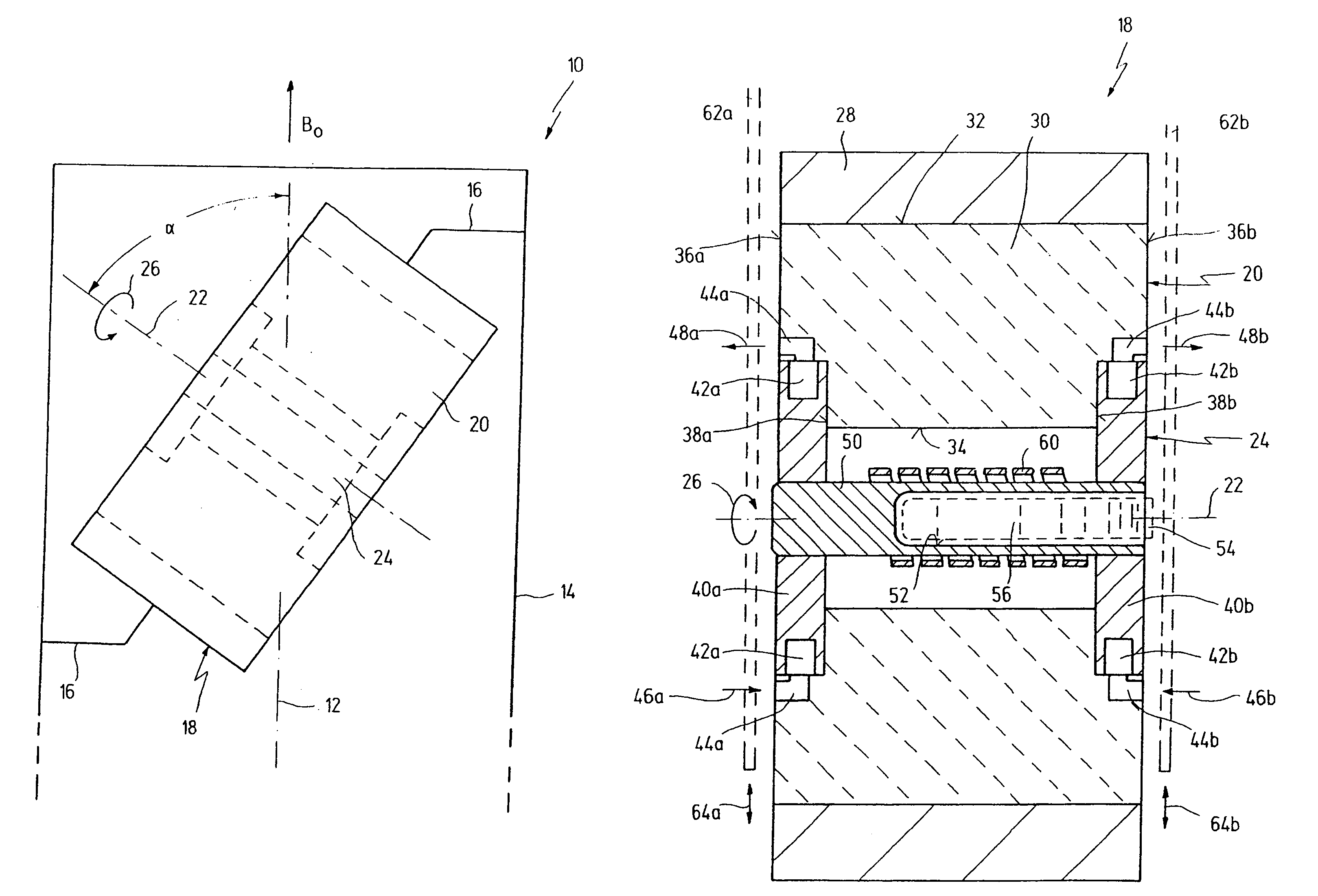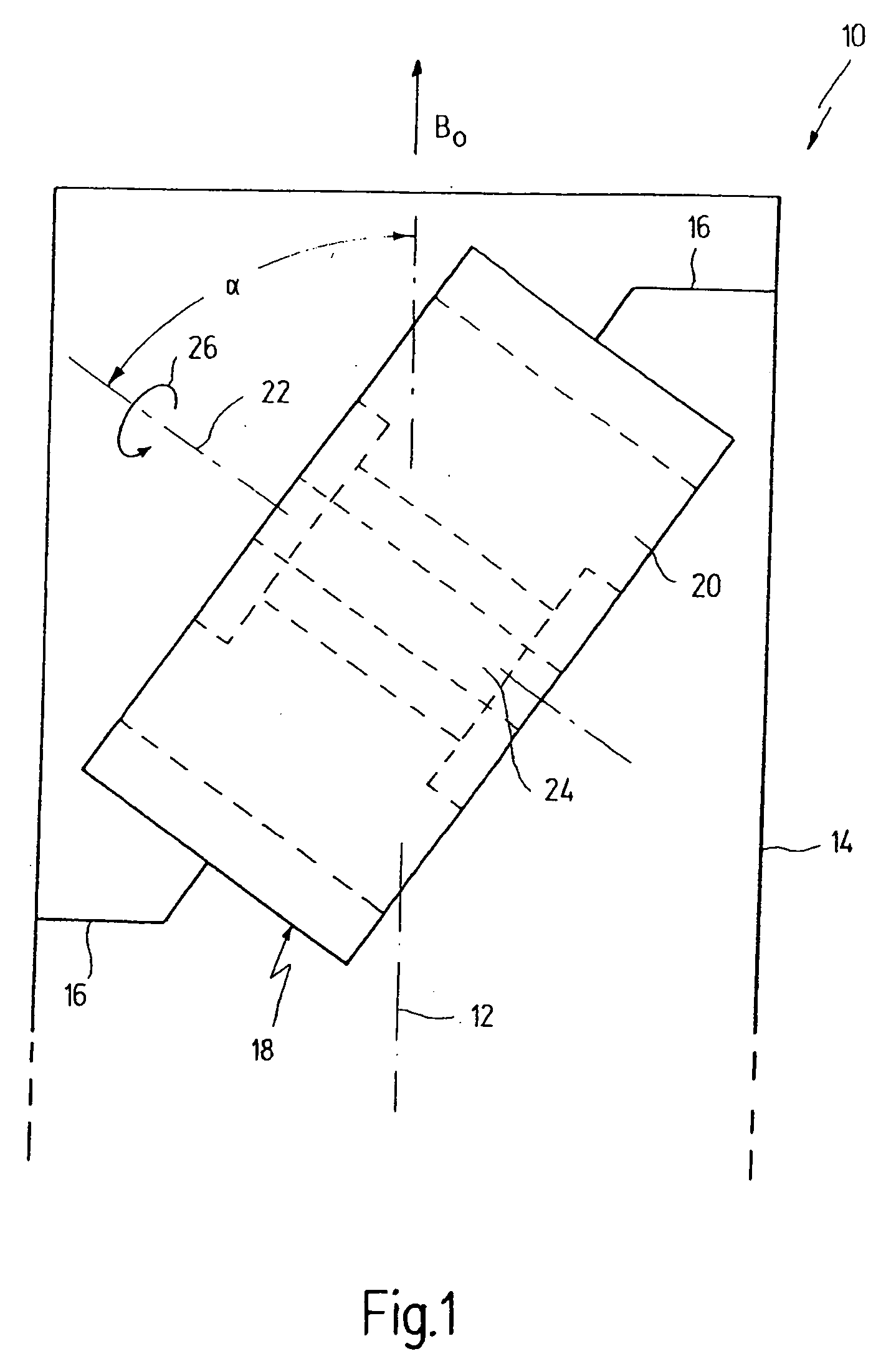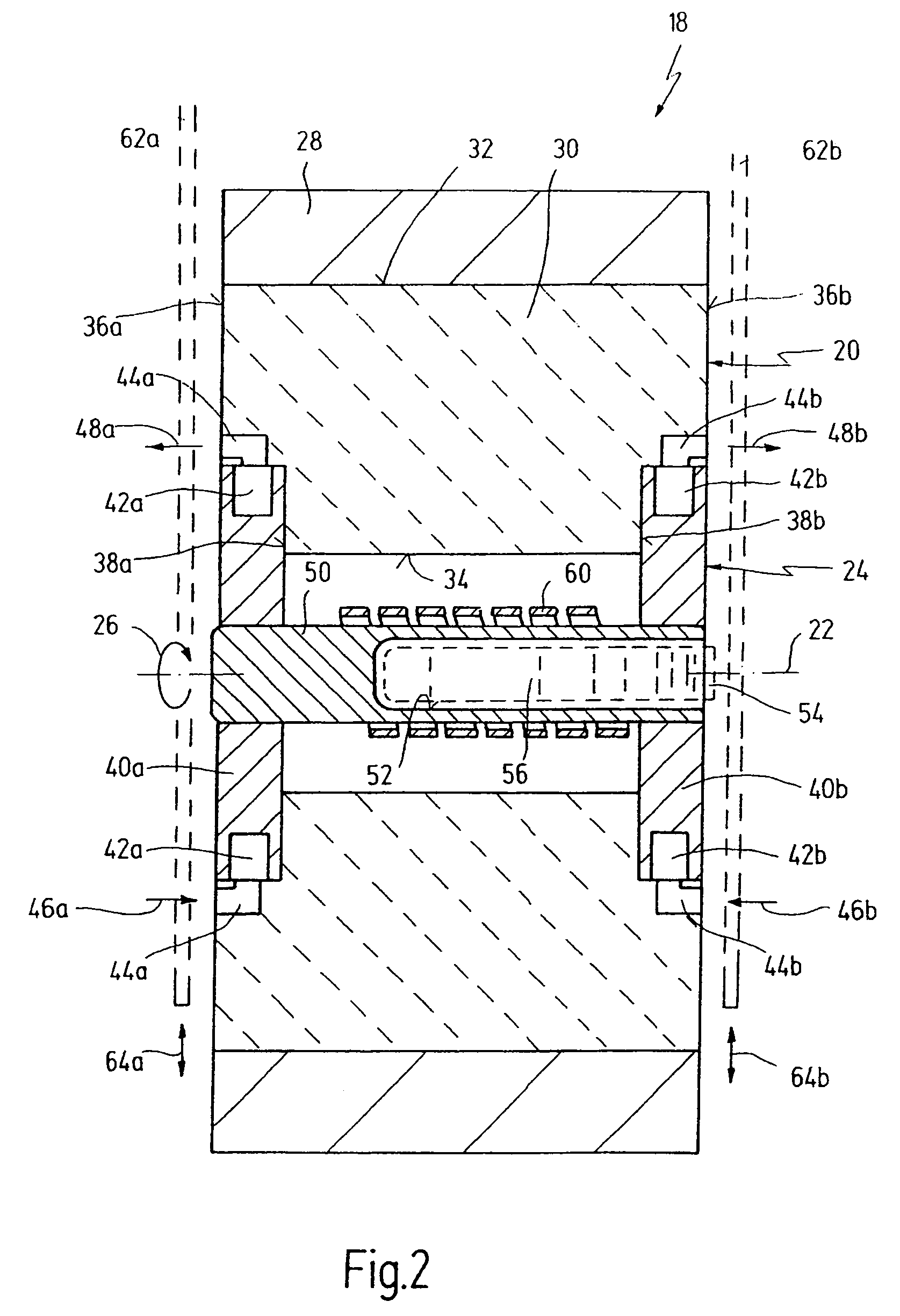Probe head for nuclear magnetic resonance measurements
a nuclear magnetic resonance and probe head technology, applied in the field of magnetic resonance, can solve the problems of deterioration of the quality factor of the resonance structure, hardly being tuned, and high dielectric losses, and achieve the effect of reducing the cross section
- Summary
- Abstract
- Description
- Claims
- Application Information
AI Technical Summary
Benefits of technology
Problems solved by technology
Method used
Image
Examples
Embodiment Construction
[0049] In FIG. 1, reference numeral 10 as a whole designates a probe head, as may be used for nuclear resonance measurements. Probe head 10 is of essentially cylindrical shape and has a longitudinal axis 12. Probe head 10 is surrounded by a housing 14 and may be inserted into a bore of a superconducting magnet. When doing so, longitudinal axis 12 coincides with the direction of constant magnetic field B0. By means of mounting elements 16, a sample holder 18 is attached to housing 14 or on a supporting structure of probe head 10. Sample holder 18 contains a stator 20 as well as a rotor 24 being journalled within stator 20 for rotation about an axis of rotation 22. The rotation of rotor 24 about axis of rotation 22 is indicated by an arrow 26.
[0050] Axis of rotation 22 is inclined relative to longitudinal axis 12, and, hence, also relative to the direction of constant magnetic field B0 by an angle α. Angle α is the so-called “magic angle” and amounts to 54.7°.
[0051] In FIGS. 2 and 3...
PUM
 Login to View More
Login to View More Abstract
Description
Claims
Application Information
 Login to View More
Login to View More - R&D
- Intellectual Property
- Life Sciences
- Materials
- Tech Scout
- Unparalleled Data Quality
- Higher Quality Content
- 60% Fewer Hallucinations
Browse by: Latest US Patents, China's latest patents, Technical Efficacy Thesaurus, Application Domain, Technology Topic, Popular Technical Reports.
© 2025 PatSnap. All rights reserved.Legal|Privacy policy|Modern Slavery Act Transparency Statement|Sitemap|About US| Contact US: help@patsnap.com



